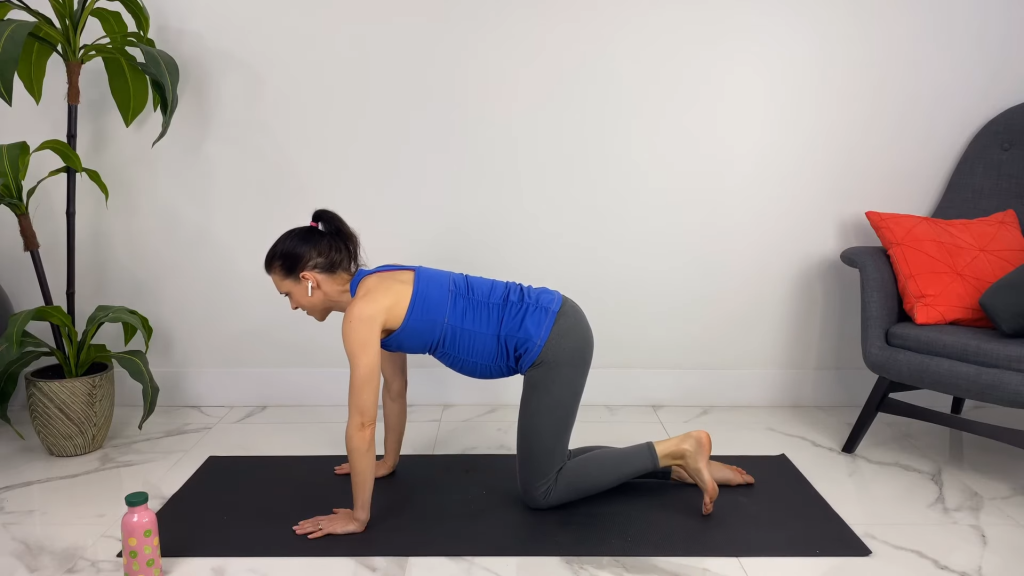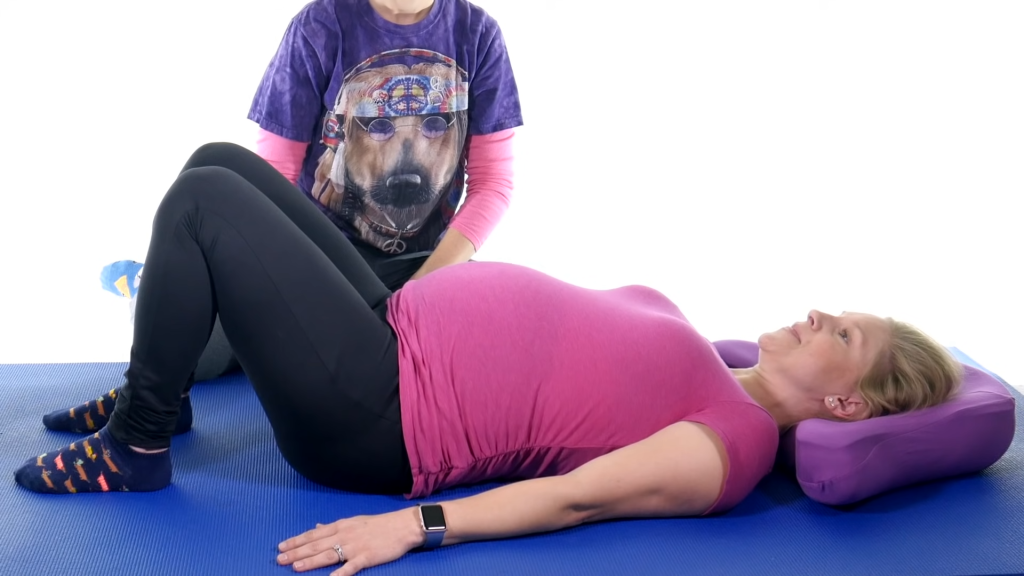Discover the relationship between good posture and back pain reduction.
Can Good Posture Help Reduce Back Pain?
Do you ever find yourself slouching in your chair, hunched over your desk, or walking with your head down? Well, it’s time to straighten up and pay attention to your posture! Believe it or not, having good posture can actually help reduce back pain. So, let’s dive into the world of good posture and discover how it can make a big difference in your life!

Understanding the Basics of Good Posture
Before we delve into the details, let’s start with the basics. Good posture is all about maintaining the proper alignment of your body while sitting, standing, or moving. It’s like a perfect balance that keeps your muscles and joints in harmony. But why is this so important?
Let’s explore the anatomy of posture to unravel the secrets behind its importance.
The Anatomy of Posture
Picture your body as a well-built machine with intricate gears and levers. Each part has a specific role to play in maintaining good posture. From the alignment of your spine to the position of your hips and shoulders, it all matters.
When you have poor posture, these gears don’t mesh well, causing unnecessary strain on certain muscles and joints. It’s like trying to ride a bike with a wobbly wheel – it’s just not going to work smoothly!
Let’s take a closer look at the spine, the central pillar of good posture. The spine is made up of 33 individual bones called vertebrae, stacked on top of each other. These vertebrae are connected by small joints called facet joints, which allow for movement and flexibility.
When your spine is properly aligned, the natural curves – the cervical curve in the neck, the thoracic curve in the upper back, and the lumbar curve in the lower back – are maintained. This alignment helps distribute the weight of your body evenly, reducing the strain on any one area.
Not only does good posture benefit your spine, but it also affects the position of your hips and shoulders. When your hips are aligned properly, it helps maintain the natural curve of your lower back and prevents excessive stress on the hip joints. Similarly, proper alignment of the shoulders reduces strain on the neck and upper back muscles.
The Importance of Proper Alignment
Now that we know a bit about the anatomy, let’s talk about why proper alignment is so crucial. When your body is aligned correctly, it allows your muscles to work efficiently and support your spine. It also helps distribute the pressure evenly, reducing the strain on specific areas.
Think of your muscles as a team working together to keep your body upright. When your posture is good, each muscle group plays its part without overexertion. However, when your posture is poor, some muscles have to work harder to compensate for the misalignment, leading to fatigue and discomfort.
Proper alignment also affects your breathing. When your body is slouched or hunched, it restricts the space available for your lungs to expand fully. This can lead to shallow breathing and decreased oxygen intake, which can affect your energy levels and overall well-being.
So, by maintaining good posture, you’re essentially giving your body the support it needs to function optimally. It’s like giving a high-five to your muscles and joints – they’ll thank you later!
The Connection Between Posture and Back Pain
We’ve all experienced that nagging back pain at some point in our lives. But did you know that poor posture could be contributing to your discomfort? Let’s delve into how bad posture can wreak havoc on your back.
Imagine this: you’re sitting at your desk, hunched over your computer, completely engrossed in your work. Your shoulders are rounded, your back is curved, and your neck is craned forward. Sound familiar? This is a classic example of poor posture, and it’s putting excessive stress on your spine and surrounding muscles.
When you slouch or hunch over, it’s like constantly crumpling a piece of paper – eventually, it’s going to get wrinkled and worn out. The same principle applies to your back. Over time, the constant strain on your spine can lead to muscle imbalances, joint stiffness, and increased risk of injury.
But what exactly is happening inside your body when you have poor posture? Let’s get a bit nerdy and explore the science behind how posture affects pain.
How Poor Posture Contributes to Back Pain
When you maintain good posture, it helps align your spine and reduces the strain on your muscles. Your spine has a natural curvature that allows it to distribute the weight of your body evenly. However, when you slouch or hunch over, this natural curvature is compromised, and certain areas of your spine bear more weight than they should.
As a result, the muscles in your back have to work harder to support your spine and maintain balance. This extra effort can lead to muscle imbalances, where some muscles become tight and overworked, while others become weak and underused. These imbalances can cause pain and discomfort, making it even harder to maintain good posture.
But it’s not just your muscles that are affected by poor posture. Your joints also suffer the consequences. When your spine is misaligned, it puts pressure on the joints, causing them to become stiff and restricted in their movement. This can further contribute to pain and increase your risk of developing conditions like arthritis.
Now, let’s talk about your spinal discs – the shock absorbers between your vertebrae. When you have good posture, your spinal discs are aligned properly, allowing them to absorb shock and distribute pressure evenly. However, poor posture can disrupt this alignment, leading to uneven pressure on the discs.
Over time, this uneven pressure can cause the discs to degenerate, leading to conditions like herniated discs and bulging discs. These conditions can be incredibly painful and may require medical intervention to alleviate the discomfort.
So, as you can see, poor posture is not just a matter of aesthetics. It has real, tangible consequences for your back health. But don’t worry, there’s hope!
The Science Behind Posture and Pain
Now that we understand how poor posture contributes to back pain, let’s explore the science behind why good posture is so important for maintaining a healthy spine.
When you maintain good posture, it helps align your spine in its natural curvature, reducing the strain on your muscles and joints. This alignment allows your muscles to work more efficiently, without unnecessary tension or stress.
Moreover, proper alignment improves circulation, allowing crucial nutrients to reach your spinal discs easily. These discs rely on a healthy blood supply to stay nourished and hydrated, preventing wear and tear. It’s like giving your body a VIP ticket to the spinal disc party!
Additionally, good posture promotes optimal breathing. When you slouch or hunch over, your chest becomes compressed, limiting your lung capacity. This can lead to shallow breathing, depriving your body of oxygen and causing fatigue. On the other hand, when you sit or stand with good posture, your chest is open, allowing for deep, full breaths that energize your body and mind.
So, the next time you catch yourself slouching or hunching over, remember the impact it can have on your back health. Take a moment to adjust your posture, sit up straight, and give your spine the support it deserves. Your back will thank you, and you’ll be on your way to a pain-free life!
Improving Posture for Pain Relief
Now that we understand the importance of good posture in reducing back pain, it’s time to learn how to achieve that picture-perfect alignment. Fear not, because we’ve got you covered with some helpful tips and exercises!

Tips for Achieving Better Posture
First things first, be aware of your posture throughout the day. Imagine a string gently pulling you up from the top of your head, aligning your body from head to toe. It might sound silly, but trust us, it works!
Additionally, avoid sitting or standing in one position for extended periods. Take breaks, stretch, and move around to keep those muscles nice and limber. And hey, don’t forget to flex those superhero muscles from time to time – you’ve earned it!
Posture-Correcting Exercises
Time to get those muscles pumping! Incorporating exercises that strengthen your core, back, and shoulders can work wonders for your posture. Think planks, bridges, and shoulder rolls – they’re like a superhero cape for your back muscles!
Remember, consistency is key, so make these exercises a part of your daily routine. Before you know it, you’ll be standing tall and proud with a posture that says, “I’ve got this!”
The Role of Ergonomics in Posture and Back Pain
Now, let’s talk about the role of ergonomics in maintaining good posture and preventing back pain. Your workspace plays a significant part in your overall posture, so it’s essential to set it up ergonomically.
Creating an Ergonomic Workspace
Start by adjusting your chair and desk height to support proper posture. Your feet should be flat on the floor, and your knees should be at a 90-degree angle. Don’t forget to position your monitor at eye level and keep your mouse and keyboard within easy reach.
With an ergonomic setup, you’ll feel like you’re working in a zen garden, with your body in perfect harmony. It’s a win-win for both productivity and posture!
The Impact of Ergonomics on Spinal Health
An ergonomic workspace goes beyond just making your job more comfortable – it also helps protect your spinal health. By maintaining good posture while working, you’re preventing unnecessary strain on your back and reducing the risk of developing chronic pain.
Think of it as investing in your future well-being – and the return on that investment? A happy, healthy spine for years to come!
The Long-Term Benefits of Good Posture
Congratulations! By now, you’ve become a posture pro, armed with the knowledge to banish back pain and enjoy a healthier life. But what are the long-term benefits of maintaining good posture?
Preventing Future Back Pain
By practicing proper posture habits, you’re building a strong foundation for your back. This reduces the risk of future back pain and ensures that you can continue doing the things you love without worry or discomfort.
Say goodbye to those pesky “I threw my back out while sneezing” incidents – with good posture, you’re building a fortress of strength!
Other Health Benefits of Good Posture
Believe it or not, good posture has a ripple effect on your overall health. It improves your breathing, digestion, and even boosts your self-confidence. After all, standing tall and proud sends a powerful message to the world – you’re ready to take on anything!
So, embrace the power of good posture and unlock a world of health and vitality. Your body and mind will thank you for it!
In conclusion, good posture isn’t just a fancy accessory – it’s a superhero cape that can help reduce back pain. Whether you’re sitting at your desk or striking a pose, maintaining proper alignment is key. So, stand tall, sit straight, and let good posture lead you towards a pain-free life!



